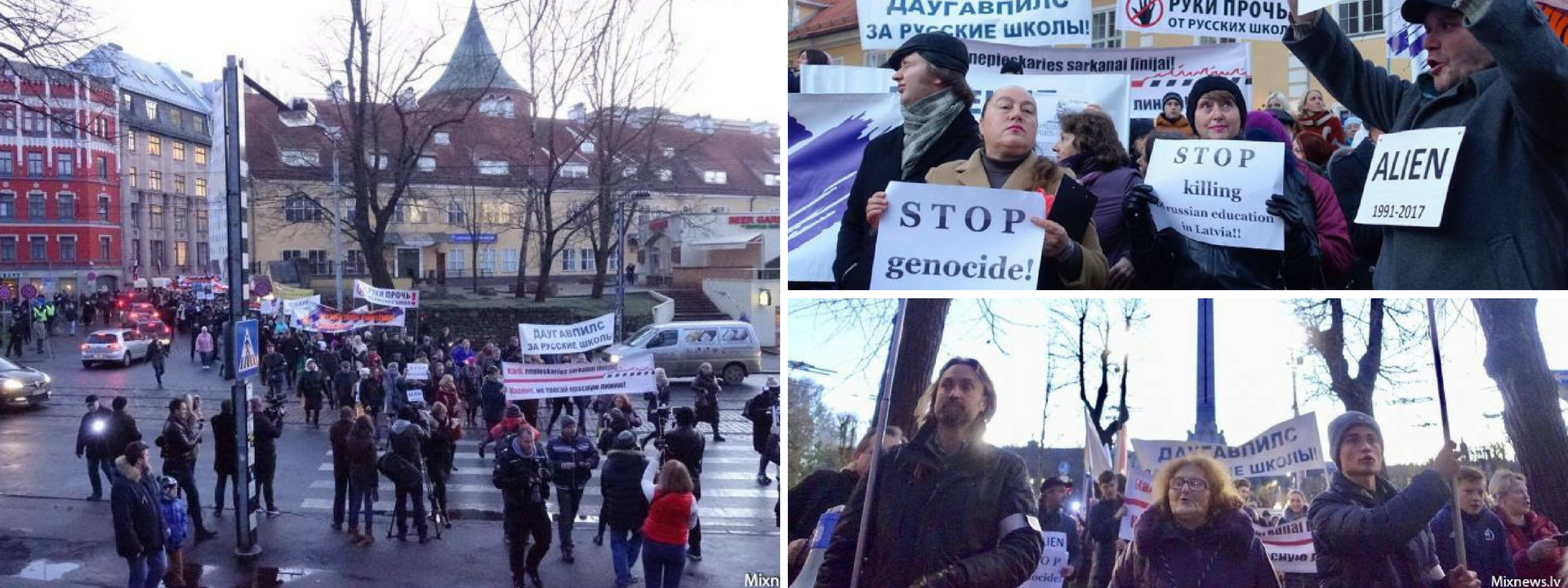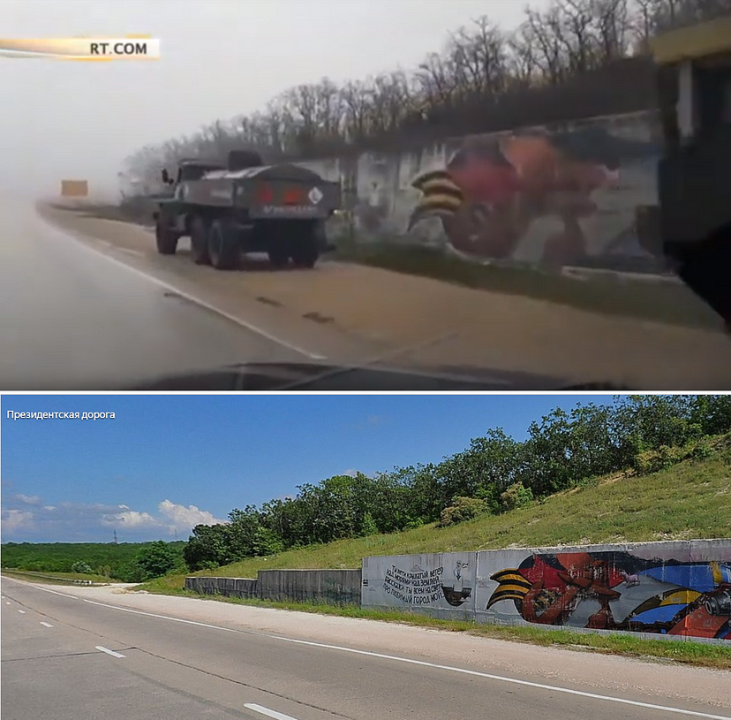#PutinAtWar: Recent Military Developments on Fortress Crimea
New Russian S-400 missile systems saturate the Crimean Peninsula
#PutinAtWar: Recent Military Developments on Fortress Crimea

BANNER: Alert button on a Russian air defense system. (Source: VK / ВЧ- 85702)
Russia deployed a battalion of the modern S-400 air defense missile systems to Dzhankoy in northern Crimea following the altercation between Russian and Ukrainian vessels in the Kerch Strait. This deployment was planned long in advance, however, and not in response to the Kerch Strait incident. Following the Kerch Strait incident, a number of Russian military vehicles were spotted moving around, to, and from the peninsula, but this did not constitute a build-up nor were they particularly notable.
This event was the last out of four publicly announced S-400 deployments in Crimea distributed across the 18th and 12th Missile Air Defense Regiments of the 31st Air Defense Division, 4th Air Forces and Air Defense Forces Army. Although this was described in Russian news media as the fourth deployment of S-400s to Crimea, it was actually the fifth.
The battalion in Dzhankoy is the latest, and likely last, deployment of 18th Missile Air Defense Regiment S-400s to Crimea since Russia’s illegal annexation of the peninsula in 2014. The Russian Ministry of Defense’s southern military district announced the battalion’s arrival on November 29, and a small ceremony was held to mark the occasion.
The deployment was widely perceived as a response to the incident in the Kerch Strait just days prior, but satellite imagery revealed that work on the facility began as early as August 15, 2018. The Russian Ministry of Defense made the plans for the deployment of this battalion public well in advance, but it is possible that the deployment was expedited in response to the Kerch Strait crisis.

A comparison of satellite imagery from August 15 and November 10, 2018, respectively, revealed the location of the protective structures for the S-400 air defense system. The protective barriers are arranged in a classic cloverleaf configuration with an elevated ramp in the middle for the system’s engagement radar and another ramp further away for the acquisition radar. There was also a final rectangular protective area to house various support vehicles. ImageSat International (ISI) posted higher quality satellite imagery of the missile site on Twitter, clearly detailing the individual components of the S-400 battalion.
Tension in the Crimea: #Russia has deployed S-400 at Dzhankoy Airbase.
After the sea incident in the #Azov Sea, the #Russians are setting up another S-400 battery in #Crimea peninsula and thickening the #military forces around #Ukraine. pic.twitter.com/hwY2AEScff
— ImageSat Intl. (@ImageSatIntl) December 2, 2018
A common feature of the S-400 battalions in Crimea is the addition of a Pantsir S-1 to provide short-range air defense (SHORAD) protection for the facility.

This deployment was announced in Russian media as the second battalion of the 18th Missile Air Defense Regiment and the fourth overall deployment of S-400s to Crimea, but four battalions worth of S-400s were already present on the peninsula by the time of the Dzhankoy deployment.
Kerch
The S-400 site in Kerch is the most extensive of the 18th Air Defense Regiment locations and has seen significant growth since Russian forces took over the facility in 2014. The current configuration of the site consists of a large collection of radars in addition to the base S-400 system. The most recent addition to the base was an unidentified radome, a protective casing for a radar, on which construction began in the summer of 2018. While the exact type of the radome was not known, it bore a high similarity to that used for the Kasta-2E2, an ultra-high frequency (UHF) radar for tracking and identifying aircraft.

The addition of air defense systems at this location was first recorded in 2015 with a standard deployment of eight launch units. At that point, however, this air defense system was assessed to be comprised of the earlier generation S-300PS missiles. This assessment was driven by the presence of a different acquisition radar: the 76N6 “clam shell” low-altitude acquisition radar native to the S-300. By late 2016, this radar was replaced with the 96L6 3D early warning and acquisition radar, which was designed to replace the 76N6. Another factor in this assessment was the presence of the 5N63S engagement radar, another vehicle specific to the S-300PS, in roadside imagery of the base.
Starting in 2017, components of the S-400 air defense system appeared at the Kerch location in place of the previous S-300 components. Satellite imagery on Google Earth suggested that this switch was made some time between September 11 and November 20, 2016. These new distinguishable components comprised the 96L6 and 92N6 radars.

@DFRLab did not find any announcements of the arrival of the S-300 or the subsequent S-400 to the Kerch location.
In addition to the standard S-400 components, the Kerch site featured a wide collection of radars and a Pantsir S-1 for SHORAD. Most notably an unidentified radome was added in Summer 2018 in addition to a 59N6E 3D air defense surveillance radar, which appeared around the same time as the S-400s. Likely, the radome was also intended to track local air traffic in the Black Sea.

Following the news of the deployment of the Dzhankoy battalion, social media users pointed out the mathematical discrepancies in the news that the Dzhankoy battalion would be the fourth S-400 battalion in Crimea, considering the Kerch battalion.
secret battalion S-400 Kerch 😎
second battalion S-400 18. AD RGT Feodosia coordinates: 45.323523° 36.362647°
92N6A number "2092AO21"
satellite image 2.5.2017 pic.twitter.com/LnyspdDIjv— Miso (@halmiso1) December 3, 2018
At the time, there was the possibility that the Kerch battalion could have been relocated to Dzhankoy but later evidence proved that this could not have been the case. A recent dispatch from RFE/RL’s Crimea service, published on December 11, showed that the S-400s at Kerch were still in place.
Three other S-400 sites exist on the Crimean peninsula, and all deployed within the past two years. The Feodosia site was the first S-400 deployment for the 18th Missile Air Defense Regiment, which was considered the first deployment of S-400s to Crimea altogether. If @DFRLab estimates are correct, this would have been the second deployment of S-400s to Crimea, with the Kerch deployment being the first.
After the 18th Missile Air Defense Regiment deployment to Feodosia, the 12th Missile Air Defense Regiment deployed a battalion of S-400s to Sevastopol in January 2018. This was the first deployment of 12th Regiment S-400s. Just two years ago, the less advanced S-300 was the predominant long-range air defense system on Crimea, but, with the upgraded capabilities incumbent with the newer S-400s because of rapid militarization of the peninsula, just a single battalion remains. @DFRLab reported on the arrival of the Sevastopol battalion earlier this year.
The most recent deployment of 12th Missile Air Defense Regiment S-400s was the battalion near Yevpatoria, the site of a major military airfield. The arrival of this battalion was announced in late September 2018, but satellite imagery suggested that it had been in that location since mid-August. Prior to moving to the outskirts of Yevpatoria, the S-400 battalion spent some time near Belbek airfield, another key military site for Russia.

Although the S-400 is often cited to have a 400-kilometer range, the missile allowing for this kind of engagement envelope has yet to enter service. It was not until October 2018 that the Russian government news agency TASS reported that the 40N6 long-range missile for the S-400 was accepted for service in Russia. The article described plans for procuring thousands of missiles to equip existing missile battalions, as well as establishing 56 new ones, through 2027.
The below map shows the range and location of all Russian long-range air defense systems covering the Black Sea and Sea of Azov.
Bals on the move
On November 27, days after the Kerch Strait incident, a convoy of a single unit of the Bal coastal missile defense system was spotted on the roads of Crimea. The convoy consisted of two launch vehicles, one radar vehicle, a loader vehicle, and several other support vehicles. Most likely, these vehicles were from the Russian 15th Coastal Missile Artillery Brigade. @DFRLab geolocated this convoy to the “Presidential Road” outside of Sevastopol, where the 15th Coastal Missile Artillery Brigade is based.

It was not clear where exactly the Bal system was going to, but it moved in a general northeasterly direction toward the “Tavrida Trail,” which runs east-west through the peninsula. One possible location for the Bal was a training range in the eastern part of Crimea, where Bal and Bastion coastal missile defense systems were present earlier this year.
Infantry Fighting Vehicles (IFV) Roundtrip
On December 8, 2018, footage emerged of a convoy of BMD-2 airborne IFV on the Crimean Bridge heading toward Russia. The video showed seven BMD-2 IFVs and two support vehicles moving in the direction of Tuzla Island, where the two sections of the Crimean Bridge intersect.

On December 12, a video supposedly recorded on December 10, two days after the first video, showed a similar number of BMD-2s and support vehicles on the Crimean Bridge moving toward the peninsula. This was likely the same convoy returning from a brief stop in the Russian Federation, possibly originating from the recently created 171st Separate Airborne Assault Battalion in Feodosia. @DFRLab did not identify any press releases from the Russian Ministry of Defense that would explain these movements.
Conclusion
The S-400 deployment to Dzhankoy should not be considered as an escalation in response to the Kerch Strait incident. This deployment was planned well in advance and should mark the final S-400 deployment to Crimea for some time. This event, however, does indicate a broader lack of Russian transparency about deployments to Crimea, as the Dzhankoy deployment was touted as the fourth of its kind.
Both military and civilian infrastructure in Crimea has been strengthened significantly in the past years. In some cases, civilian infrastructure can have a dual use, as illustrated by the IFVs traversing the Kerch bridge in early September.
While the movement of forces in Crimea were likely meant to signal Russian resolve, little appeared to have been achieved. The main thing to watch in the future will be long-term improvements to existing forces and the arrival of new ones.
Follow the latest Minsk II Violations via the @DFRLab’s #MinskMonitor.
Follow along for more in-depth analysis from our #DigitalSherlocks.


